How to Get a Tree
- Entering the TreeKeeper School of the Year contest?
Enter school in the green box at the right. If not, go to #2 - Choose your tree
See descriptions and photos below. - Pay online
We are using PayPal. You do not need an account.
Note: Limit 4 trees per household (businesses and multi-family residences may contact us for larger orders). - Pick up
At one of 12 events this spring. Choose your preferred pick-up location from the drop-down menu. View Map
Apple and plum trees distributed until mid-April are bare root: plant them promptly or keep in a pot so the roots don’t dry out.
All other trees are sold in small to medium pots which can be carried by hand, in a backpack or bicycle trailer. You may also take these trees on the bus (tell the driver we said so). Any trees not picked up at your selected distribution event will be forfeited, so mark your calendar.
Notice to those scheduled to pick up at Sunset Community Centre on Sunday, April 12, 3-4pm: It turns out this is the same day as the Vaisakhi Parade on Main Street. It's an awesome cultural event with great food but it does get very crowded. We will still be distributing trees as scheduled in the parking lot behind the Community Centre. The parking lot can be reached heading east from Fraser Street on 53rd Avenue, which would avoid the parade route where traffic is blocked. However, the whole area will still be very crowded, so you may opt to pick up your Sunset Community Centre trees the following weekend on Saturday, April 19, 3-4pm. Just send us an email letting us know you'd like to switch. Or...come and join the fun for the parade! We will be selling random (non-pre-ordered) trees during the festivities which run from 11am to 4pm.
Choose your pickup location:
Are you in the TreeKeeper School of the Year contest?
Enter your school here:

A beautiful shrub or multi-stemmed tree native to our region. Resembles a Japanese maple with twisted, spreading limbs and almost circular leaves which turn red or yellow in fall. Good in open spaces or semi-shady areas. The lower limbs may be pruned as desired. Among other uses, First Nations people boiled the bark to make a tea for colds.
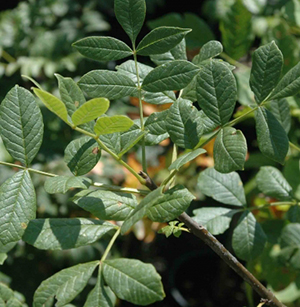
Native to the Pacific Northwest (and down to central California), the Oregon Ash is found in nature near streams, so it does well in areas with moist soil conditions. A medium-sized tree, at maturity it may get up to 25m tall.
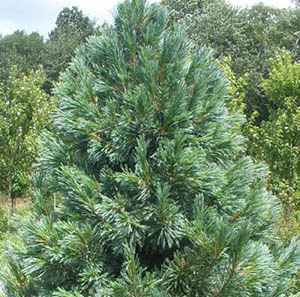
Soft green-to-blue evergreen needles with a distinctive twisting form, a youthful narrow habit and vigorous growth make this selection of Limber pine ideal for a coniferous, vertical accent point in the garden. Does best in full sun and is drought-tolerant once established. An excellent choice for patio planters and large containers.
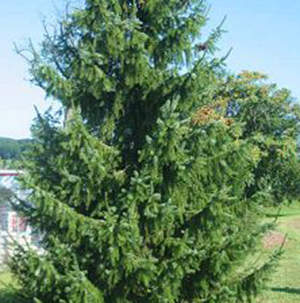
One of the most attractive evergreens. Native to western Siberia, this is a narrow, pyramidal, spire-like tree with pendant branches that ascend at the tips. The flattened bright green needles have silvery undersides. Great for a garden focal point.
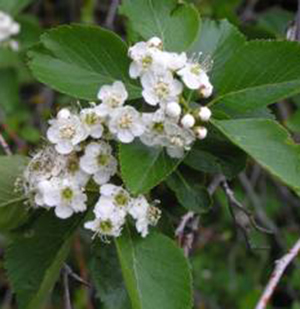
A small tree or shrub native to our region. The Pacific Crabapple has been an important food source for many coastal First Nations people and is still gathered in the wild today. In spring it has fragrant white blossoms which are attractive to bees. The fruit ripens in late summer. Although small and tart, they can be eaten off the tree, but many prefer to cook them into delicious such as a jam.
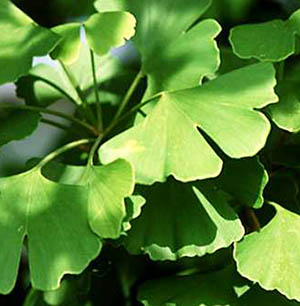
A dinosaur tree, the modern ginkgo is remarkably similar to fossils dating back 270 million years. The national tree of China and the official tree of Tokyo, it has long been cultivated in Asia and some spectacular specimens still found on temple grounds are more than 1,000 years old. Gingkos are slender and sparsely branched at first, eventually growing 20-30m tall. In autumn the yellow leaves are striking.
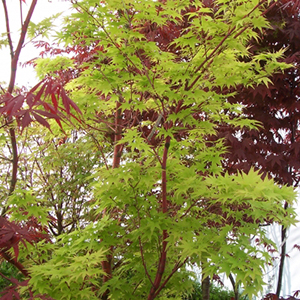
One of the most desired types of Japanese maple for its winter interest. The bark on the new twigs turns bright coral red after the leaves drop, making an interesting focal point in the winter garden. Leaves emerge in April yellow-green before turning red and orange in early summer. Does best in partial sun away from drying winds.

Medium-sized tree with white, urn-shaped, fragrant flowers in early summer. A favourite of butterflies, Sourwood is a host for butterfly larvae and is said to help bees produce delicious honey. It really comes into its own with a stunning autumn display of yellows, reds and purples.
Apples
Plant apple trees in a sunny, well-draining location to get the best fruit. Most apples need another type blooming nearby for cross-pollination. If you have room for just one you can try grafting different varieties onto the same tree or convince your neighbour to plant apples too.
The best of the early goldens, Ginger Gold has all the qualities of Golden Delicious but ripens six to eight weeks earlier. It can be picked green, just as color begins to turn, and will ripen to an attractive yellow color. It has a sweet, tangy flavor and firm, crisp flesh.
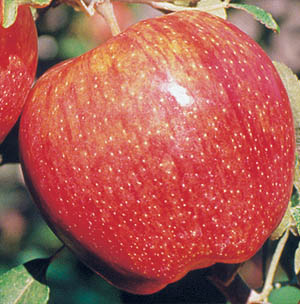
A variety of Cameo, this new introduction features attractive colour and a crisp, sweet-tart flavour. The tree is vigorous and a hardy producer. The apples also store well.
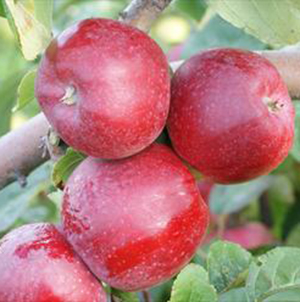
A variety tolerant to many apple diseases. Liberty produces a medium-size apple, sporting brilliant red color over yellow. The flesh is pale yellow and juicy.
Large size and excellent flavour of its parent, Jonagold Prince, plus the advantage of better storage and flavor keeping qualities. The deep red hue shows on all the apples (even shaded fruit) at the same time and in many cases the coloring comes earlier than on other strains of Jonagold.
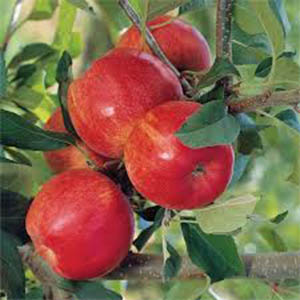
A sport of Royal Gala, Crimson Gala has a brighter, fuller red color with the characteristic striping of its parent. Fruit is medium sized, sweet, and juicy.
Plums
Plant plums in sunny, warm locations in soil that drains well as they don’t like “wet feet”. Plums tend to be exuberant growers with big yields in good years – you may need to reduce fruit early in the season
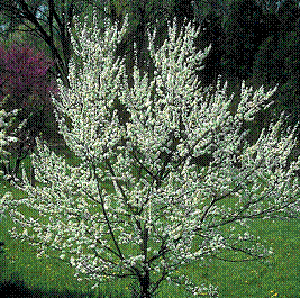
Beautiful, large, red fruits with gold flesh. This big producer bears sweet plums that are delicious when eaten fresh, cooked or canned. The tree is vigorous, easy-to-grow and heat-tolerant. Ripens in mid July. Self-pollinating.
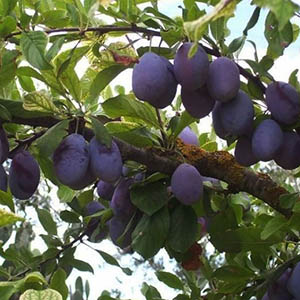
Medium-sized oval blue fruit excellent for eating fresh or preserving. This prune plum ripens 10 days to two weeks ahead of regular Italian. European plum trees are larger and more erect than Japanese types such as Santa Rosa.
Figs
Fig trees do best in microclimate pockets that maximize light and heat. Near the south face of a building which reflects the summer sun is a good choice. In a good year fig trees here can produce an abundant crop of sweet, juicy, tender fruit. In a very good year there may be enough sun to encourage a second crop later in summer. Even in a cool, wet year the trees put out an exuberant array of large iconic leaves which may help growth and fruiting in later years.
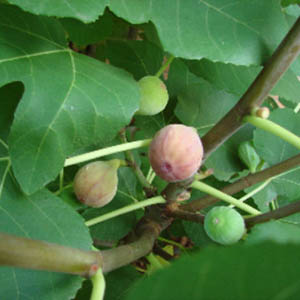
Brown Turkey figs have a reddish-brown skin with strawberry coloured flesh. In a good year with plenty of sun and warmth they will produce two crops, a breba crop (fruit that overwinters as a pea-sized embryo and matures to a ripe size the following year) in late spring and a main crop later in summer.
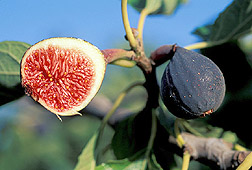
Some aficionados say the Negronne, also known as Violette de Bordeaux, has the sweetest and darkest red flesh of any fig. A ripe Negronne spread on toast has been likened to raspberry jam. The leaves are an attractively rich green and the tree is a natural dwarf, making it an excellent natural choice for a container.
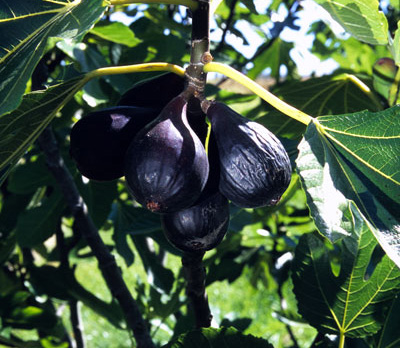
Peter's Honey Fig trees grow in a relatively compact shape, making them a good choice for containers (although you can control the size of any fig tree with pruning). The fruit has greenish gold skin and the taste, some say, rivals honey for a sweet deliciousness.
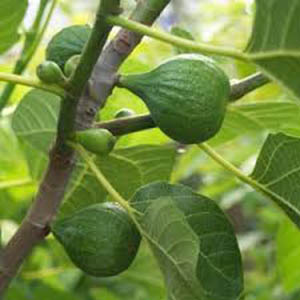
Some growers believe Desert King is the best choice for our region as it produces a reliable breba crop, although no main crop later on. The figs have green skin and pink flesh and taste great.


